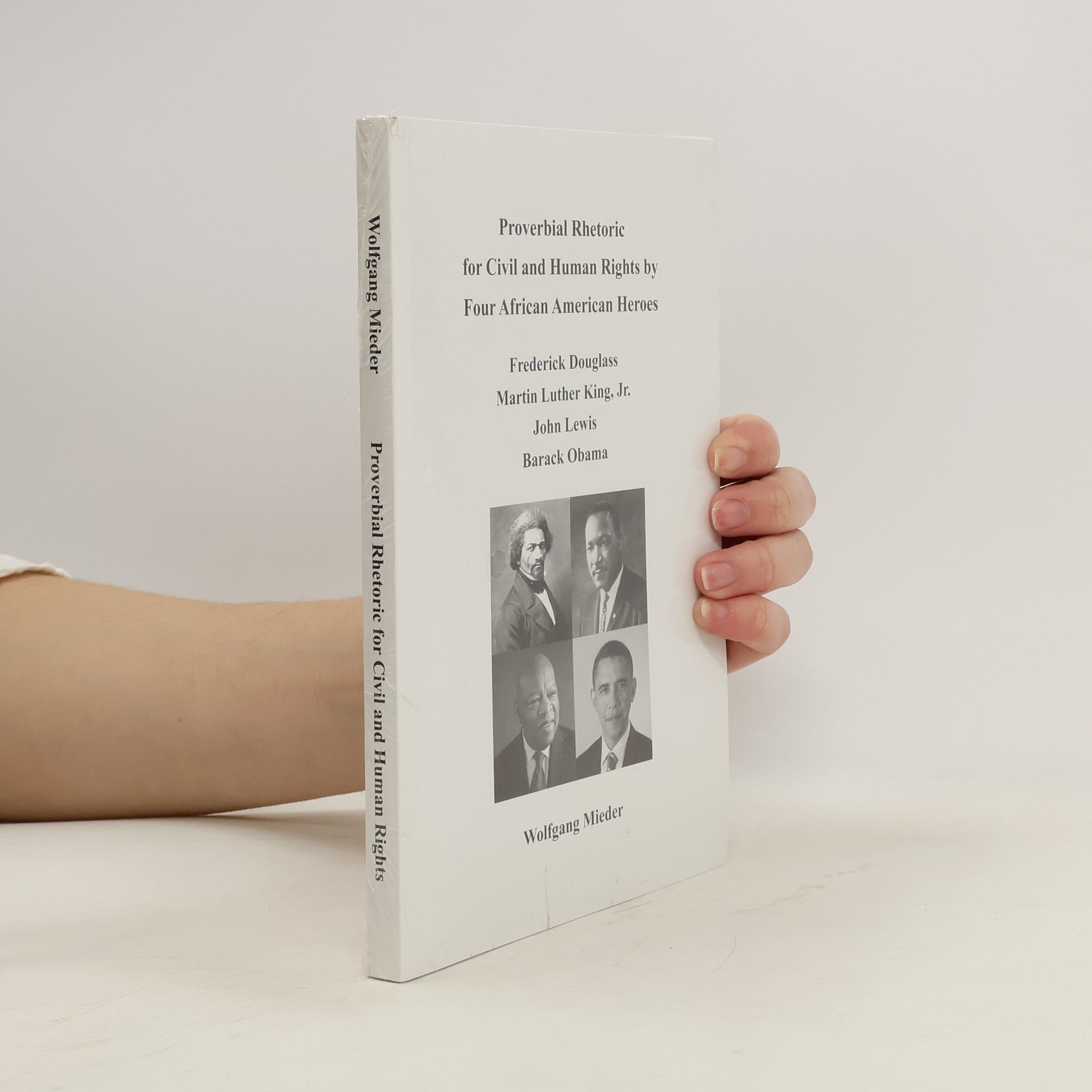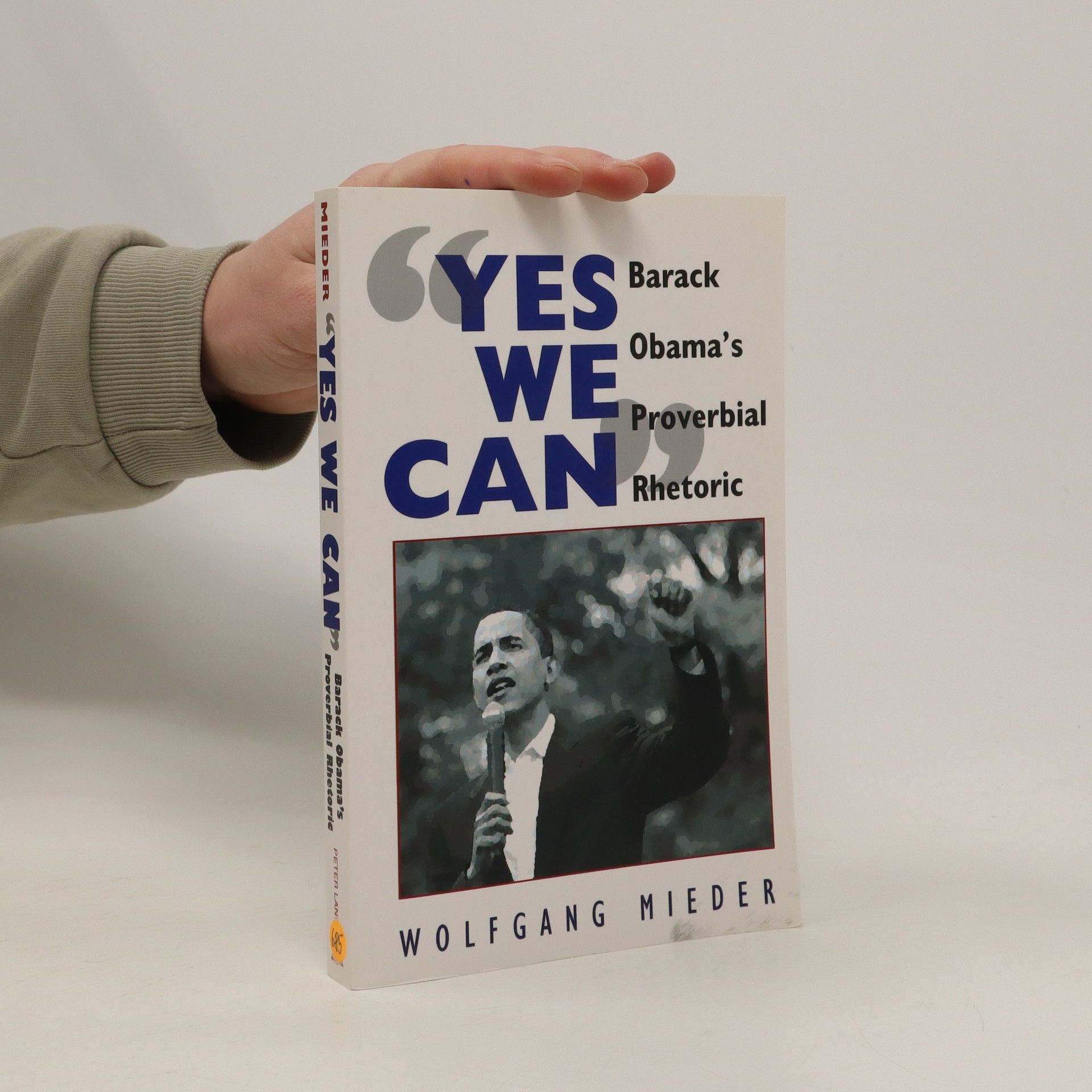Dornröschen
Das Märchen in Literatur, Kunst, Medien und Karikaturen






Das Märchen in Literatur, Kunst, Medien und Karikaturen
The Proverbial Rhetoric of John F. Kennedy
Exploring eight thousand pages of John F. Kennedy's communications, this book delves into his unique use of proverbs and formulaic language. It highlights themes such as his emphasis on eloquence, the biblical wisdom woven into his speeches, and the use of folk proverbs to advocate for justice and peace. Additionally, it examines his penchant for animal metaphors and maritime expressions to convey deeper meanings about life. The second part features a detailed index of passages showcasing these sententious references within their contexts.
Modifizierte Redensarten in Literatur, Medien und Karikaturen
Vor fünf Jahren erschien der achtzehnte Band meiner „Kulturelle Motivstudien“ Buchreihe. Es war eine Herausforderung, 100 bekannte Wendungen auszuwählen, und nun freue ich mich, einen weiteren Band mit Hundert weiteren sprach- und kulturgeschichtlich interessanten Redewendungen vorlegen zu können. Diese Redensarten bieten eine umfassende Übersicht über das oft manipulierte Auftreten gängiger Ausdrücke in moderner Literatur, Medien und Karikaturen. Der neue Band ist keine bloße Ergänzung, sondern enthält auch moderne Redensarten wie „weg vom Fenster sein“ und „Null (Keinen) Bock haben“. Einige Kapitel befassen sich mit Redensarten, die durch Lehnübersetzungen in mehreren europäischen Sprachen verbreitet sind und bis zur Antike oder Bibel zurückgehen. Beispiele sind „Öl aufs (ins) Feuer gießen“ und „das Licht am Ende des Tunnels sehen“. Die 200 beschriebenen Redensarten stellen ein gewisses Minimum an allgemein bekannten deutschen Redensarten dar. Jedes Kapitel beginnt mit Informationen zu Herkunft, Bedeutung und Überlieferung, oft mit historischen Belegen seit dem Mittelalter. Darauf folgen chronologisch bis zu über dreißig Textbelege aus Literatur und Medien, darunter Aphorismen, Gedichte und Schlagzeilen. Abbildungen von Reklamen und Karikaturen runden die Kapitel ab, insgesamt gibt es 1806 Belege aus 1608 Texten und 198 Abbildungen.
Modifizierte Sprichwörter in Literatur, Medien und Karikaturen
Der Band bietet eine umfassende Analyse und kreative Bearbeitung von hundert deutschen Sprichwörtern, ergänzt durch moderne und angloamerikanische Varianten. Jedes Sprichwort wird in einem eigenen Kapitel behandelt, das Herkunft, Bedeutung und moderne Interpretationen beleuchtet. Besonders betont wird die humorvolle und ironische Auseinandersetzung mit den traditionellen Weisheiten, die oft als Antisprichwörter fungieren. Zudem bereichern 185 Abbildungen in Form von Karikaturen und Witzzeichnungen die Diskussion und zeigen die kommunikative Relevanz dieser neuen Modifikationen auf.
Moderne Sagwörter aus Literatur und Medien
Die Sammlung präsentiert 1111 sagwortartige Texte, die aus Witzseiten bekannter Zeitschriften, Sponti-Sprüchen und Graffiti stammen. Sie enthält auch literarische Beiträge von Autoren wie Bertolt Brecht und Günter Grass sowie Kurzgedichte, die die triadische Struktur traditioneller Wellerismen nutzen. Die Texte reichen von humorvollen und satirischen bis hin zu ernsthaften gesellschaftlichen Kommentaren. Sie reflektieren die Alltäglichkeit und Absurdität des Lebens, wobei die unerwarteten Pointen oft zu tiefgründigen Einsichten führen. Die Sammlung ist alphabetisch nach Hauptstichwörtern geordnet und zeigt die anhaltende Neigung zu prägnanten, aussagekräftigen Formulierungen in der modernen Literatur.
Sprichwörtliches in den Tagebüchern von Joseph Goebbels
"Diese Studie betrachtet die Sprichwörter und Redensarten, die Joseph Goebbels (1897-1945) in seinen umfangreichen Tagebüchern verwendet hat. Eine Arbeit wie diese, mit Warnungen aus der Vergangenheit, scheint in unserer Gegenwart wichtig zu sein, in der so vieles, was nicht ins Weltbild bestimmter Individuen oder Gruppen passt, mit erschreckendem Erfolg als 'fake news' abgetan oder als Propaganda einer 'Lügenpresse' disqualifiziert werden kann. In einer Zeit, in der sich Wahrheit und Fakten immer mehr gegen Alternativen durchsetzen müssen, sollte daran erinnert werden, wohin dies führen kann. Die eingehende Untersuchung der sprichwörtlichen Rhetorik des Propagandaministers des Dritten Reiches ist also ein wichtiger und notwendiger Beitrag für unsere Zeit. Gleichzeitig kann hier Goebbels' gewissenloses und niederträchtiges Verhalten aufgezeigt werden, für das seine schriftliche und mündliche Sprache eine ungemein wichtige Rolle spielte. Die vorliegende Studie beweist, dass v.a. die Volkssprache mit ihren eingängigen Sprichwörtern und Redensarten viel zu der immer wieder betonten 'Sprachgewalt' Goebbels' beigetragen hat. ... Der umfangreiche zweite Teil des Buches besteht aus einem Register mit 554 Stichwörtern und 4,618 kontextualisierten Sprichwörtern und Redensarten, die in der 29-bändigen Ausgabe der Goebbels-Tagebücher von 1923-1945 zu finden sind."--Page 4 of printed paper wrapper
Focusing on distinctly American expressions, this comprehensive reference guide presents nearly 1,500 proverbs originating from the 17th century to the present. Compiled by Wolfgang Mieder, it includes a scholarly introduction that delves into the history, structure, and cultural significance of these proverbs, alongside known authors and sources. The work also features a bibliography of proverb collections and interpretive scholarship, providing insights into American social and cultural attitudes through its unique language.
Wer eine Sprache richtig gut lernen möchte, kommt um ihre Sprichwörter nicht herum. Das Buch enthält rund 1200 Sprichwörter, die sprachlich und sachlich erläutert wie auch zeitlich eingeordnet werden. Eine aufschlussreiche Einleitung führt in den Band ein, die abschließenden Literaturhinweise bieten Anknüpfungspunkte für eine noch intensivere Auseinandersetzung mit dem Thema. Von »Absence makes the heart grow fonder« bis »Zeal without knowledge is the sister of folly«. Redewendungen verstehen und anwenden lernen Alphabetisch angeordnet für schnelles, gezieltes Nachschlagen Mit Worterklärungen für ein besseres Grundverständnis der englischen Wendungen Niveau B1–C1 (GER)